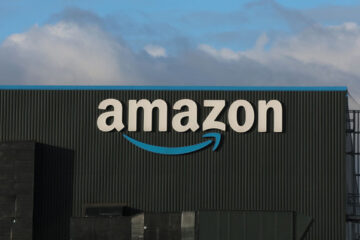DUBLIN, Jan. 6, 2022 /PRNewswire/ — The “Probiotics Food & Cosmetics Market by Product Type (Probiotics Food and Beverages, Dietary Supplements, Cosmetics), Ingredient (Bacteria, Yeast), Distribution Channel (Hypermarkets/Supermarkets, Pharmacies/Drugstores, Specialty Stores, Online) & Region – Global Forecast to 2026” report has been added to ResearchAndMarkets.com’s offering.
Probiotics have therapeutic value and prove beneficial for the treatment of atopic dermatitis and skin sensitivity, when used in natural skincare products help to deliver good bacteria to the skin. These bacteria can help restore the natural balance of the skin, ensuring it functions the way it should and is replenished with the nutrients it needs to stay protected from the elements.
Probiotics are also an effective anti-inflammatory, due to which they help and soothe redness, irritation, and skin conditions, including acne, rosacea, and dry skin. The increasing use of probiotics in the personal care segment is attributed to the growing consumer interest in health and grooming. It has Lactobacillus johnsonii aids in the protection of Langerhans cells from being damaged by UV radiation, Lactobacillus pesodoris keeps the odor-producing bacteria away from the body.
Probiotics can replace pharmaceutical agents
The increasing demand for probiotics has shown that customers prefer products with proven health benefits. The increasing evidence of health benefits associated with probiotics for health restoration has increased the customer expectations related to probiotics. This inclination toward a safe, natural, and cost-effective substitute for drugs has led to the application of probiotics as pharmaceutical agents. Beneficial effects of probiotics as pharmaceutical agents seem to be strain- and dose-dependent. Clinical trials have displayed that probiotics may cure certain disorders or diseases in humans, especially those related to the GI tract.
Yeast probiotics can be used as antibiotics or growth promoters.
Yeast, as a probiotic, is actively used in applications such as food, beverages, pharmaceuticals, and industrial enzymes. For a yeast strain to be selected as a probiotic, it needs to have a high tolerance to acidity, should show resistance to bile salts, must have an adhesion capacity to the intestinal cells, and should demonstrate an immunostimulant effect. According to the European Food Safety Authority (EFSA), Saccharomyces cerevisiae is the most commonly used yeast used in food fermentation. Some yeast strains have anti-inflammatory properties and can prevent intestinal infections.
Key Topics Covered:
1 Introduction
2 Research Methodology
3 Executive Summary
4 Premium Insights4.1 Brief Overview of the Probiotic Food & Cosmetics Market4.2 Probiotic Food & Cosmetics Market Size, by Region4.3 COVID-19 Impact on the Probiotic Food & Cosmetics Market
5 Market Overview5.1 Introduction5.2 Market Dynamics5.2.1 Drivers5.2.1.1 Increasing Popularity of Probiotic Dietary Supplements5.2.1.2 Participation of International Bodies in the R&D of Probiotic Products5.2.1.3 Market Competitiveness in the Probiotics Market5.2.2 Restraints5.2.2.1 International Quality Standards and Regulations for Probiotic Products5.2.2.2 High R&D Costs for Developing New Probiotic Strains5.2.2.3 Instances of Allergies to Some Probiotic Supplements5.2.3 Opportunities5.2.3.1 Probiotics Can Replace Pharmaceutical Agents5.2.3.2 Increase in Demand for Probiotics in Developed Economies5.2.4 Challenges5.2.4.1 Intolerance of Probiotics to Stomach Acid and Bile
6 Industry Trends6.1 Introduction6.2 Supply Chain6.3 Technology Analysis6.3.1 Indication-Specific Formulations to Improve the Metabolic Activity of Microbes6.3.2 Microencapsulation to Enhance the Viability of Probiotics6.3.3 Probiotics and Artificial Intelligence6.4 Pricing Analysis: Probiotic Food & Cosmetics Market6.5 Ecosystem of Probiotics6.5.1 Probiotic Food & Cosmetics Market: Ecosystem Map6.6 Yc-Ycc Shift: Trends/Disruptions Impacting the Customer’s Business6.7 Porter’s Five Forces Analysis6.7.1 Probiotic Food & Cosmetics Market: Porter’s Five Forces Analysis6.7.2 Threat of New Entrants6.7.3 Threat of Substitutes6.7.4 Bargaining Power of Suppliers6.7.5 Bargaining Power of Buyers6.7.6 Intensity of Competitive Rivalry6.8 Patent Analysis6.9 Case Studies6.10 COVID-19 Impact Analysis6.11 Regulatory Framework6.11.1 North America6.11.1.1 United States6.11.1.2 Canada6.11.2 Europe6.11.3 Asia-Pacific6.11.3.1 Japan6.11.3.2 Australia & New Zealand6.11.3.3 India6.11.4 South America6.11.4.1 Brazil
7 Probiotic Food & Cosmetics Market, by Ingredient7.1 Introduction7.2 Bacteria7.2.1 Bacteria Plays a Major Role in Building Immunity Among People7.2.2 Lactobacilli7.2.2.1 Lactobacillus Acidophilus7.2.2.2 Lactobacillus Rhamnosus7.2.2.3 Lactobacillus Casei7.2.2.4 Lactobacillus Reuteri7.2.3 Bifidobacterium7.2.4 Streptococcus Thermophilus7.3 Yeast7.3.1 Probiotics are Widely Used for Several Therapeutic Purposes7.3.2 Saccharomyces Boulardii
8 Probiotic Food & Cosmetics Market, by Distribution Channel8.1 Introduction8.1.1 Hypermarkets/Supermarkets8.1.1.1 High-Growth Prospects for Probiotic Manufacturers in Asia-Pacific8.1.2 Pharmacies/Drugstores8.1.2.1 in the Us, the Demand for Dietary Supplements Will Increase Amid the Rise in the Geriatric Population8.1.3 Specialty Stores8.1.3.1 Specialty Stores Provide a Variety of Probiotic Dietary Supplements to Various Categories of People8.1.4 Online8.1.4.1 Online Shopping to Gain Consumer Interest in the Coming Years
9 Probiotic Food & Cosmetics Market, by Product Type9.1 Introduction9.2 Probiotic Food & Beverages9.3 Probiotics Dietary Supplements9.3.1 Dietary Supplements are an Alternative to Fulfill Diet Deficiencies9.4 Probiotic Cosmetics9.4.1 due to this Rising Inclination, the Personal Care Industry is Consistently Witnessing Substantial Growth
10 Probiotic Food & Cosmetics Market, by Region
11 Competitive Landscape11.1 Overview11.2 Market Share Analysis, 202011.3 Key Player Strategies11.4 Revenue Analysis of Probiotic Food & Cosmetics Companies, 2018-202011.5 COVID-19-Specific Company Responses11.5.1 Adm11.5.2 Dupont11.5.3 Kerry Group11.5.4 Nestle11.6 Company Evaluation Quadrant (Food and Beverages Companies)11.6.1 Star11.6.2 Pervasive11.6.3 Emerging Leaders11.6.4 Participants11.6.5 Product Footprint11.7 Cosmetic Companies Evaluation Quadrant11.7.1 Progressive Companies11.7.2 Starting Blocks11.7.3 Responsive Companies11.7.4 Dynamic Companies11.8 Competitive Scenario and Trends11.8.1 Product Launches, Deals, and Other Developments11.8.2 Deals11.8.3 Others
12 Company Profiles12.1 Key Companies12.1.1 Probi Ab12.1.2 Nestle12.1.3 Archer Daniels Midland Company12.1.4 Danone12.1.5 Dupont12.1.6 Yakult Honsha12.1.7 General Mills12.1.8 Kerry12.1.9 Biogaia 12.1.10 Morinaga Milk Industry Co., Ltd. 12.1.11 Glowbiotics LLC 12.1.12 Eminence Organic Skin Care 12.1.13 Esse Skin Care 12.1.14 L’oreal 12.1.15 Estee Lauder 12.1.16 Tula Skincare 12.1.17 Aurelia London 12.1.18 Laflore Probiotic Skincare 12.1.19 Gallinee Microbiome Skincare 12.1.20 Biomilk Skincare
13 Adjacent and Related Markets
14 Appendix
For more information about this report visit https://www.researchandmarkets.com/r/dvub54
Media Contact:
Research and Markets Laura Wood, Senior Manager [email protected] For E.S.T Office Hours Call +1-917-300-0470 For U.S./CAN Toll Free Call +1-800-526-8630 For GMT Office Hours Call +353-1-416-8900 U.S. Fax: 646-607-1907 Fax (outside U.S.): +353-1-481-1716
View original content: https://www.prnewswire.com/news-releases/global-probiotics-food–cosmetics-market-2021-to-2026—probiotics-ability-to-replace-pharmaceutical-agents-presents-opportunities-301455704.html
SOURCE Research and Markets


